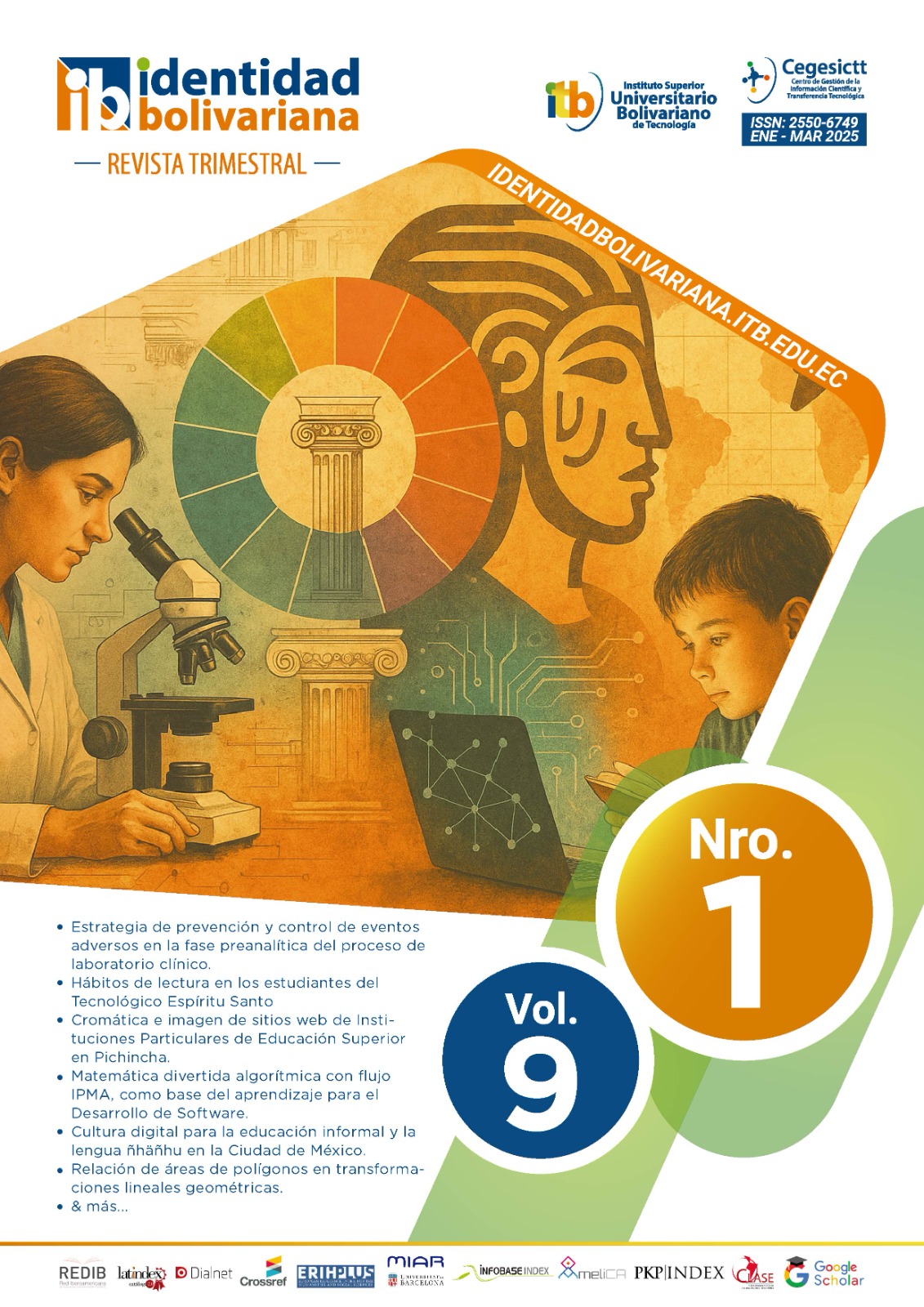Strategy for prevention and control of adverse events in the preanalytical phase of the clinical laboratory process
Main Article Content
Abstract
To achieve accuracy and reliability in clinical analyses, it is crucial to avoid adverse events in the clinical laboratory process. Analysis results provide objective and quantifiable data essential to correctly diagnose diseases; Without these, treatments may be ineffective and even harmful. However, in medical practice errors in the laboratory process are frequent, especially in the preanalytical phase. Therefore, the objective of the research was to design a strategy for the prevention and control of adverse events in the pre-analytical phase of the clinical laboratory process, which contributes to improving the quality of care and patient safety at the León Becerra Hospital in Guayaquil.The research followed a qualitative, descriptive and field methodology. In the theoretical methods, analysis-synthesis, inductive-deductive and structural systemic were used. Regarding empirical methods, observation, interview and survey were used, allowing the authors to obtain reliable information to design an effective prevention and control strategy. This strategy contributed significantly to reducing adverse events in the preanalytical phase of the clinical laboratory process at the León Becerra Hospital. It was concluded that the implementation of a prevention and control strategy in the preanalytical phase not only improves the precision and reliability of clinical analysis, but also ensures more precise diagnoses and more effective treatments, thus increasing patient safety and quality. of medical care.
Article Details
Section
How to Cite
References
Díaz, D., & Santoyo, M. (mayo.-junio de 2019). El Laboratorio Clínico en la mejoría continúa de la calidad. Rev Ciencias Médicas, 357-359. Obtenido de http://scielo.sld.cu/pdf/rpr/v23n3/1561-3194-rpr-23-03-357.pdf
Feinleib, M. (2001). A Dictionary of Epidemiology. (R. Last, & S. Harris, Edits.)
American Journal of Epidemiology, 154. doi:10.1093/aje/154.1.93-a
Márquez, A. (2000). Un modelo del proceso pedagógico y un sistema de estrategias metodológicas para el desarrollo de la excelencia y de la creatividad. Santiago de Cuba.: Instituto Superior Pedagógico “Frank País”.
Matute, G., Plaza, P., & Matute, L. (2022). Seguridad del paciente en laboratorios clínicos generales. Revista Ocronos. Obtenido de https://sga.uteq.edu.ec/media/evidenciasiv/2022/08/07/evidencia_articulo_20228 795515.pdf
Mexico, Dirección de Seguridad del Paciente. (S/A). Secretaría de Salud. Obtenido de Glosario de términos aplicados a la Seguridad del Paciente: http://www.calidad.salud.gob.mx/site/calidad/docs/dsp-sp_00F.pdf
Rodríguez, J. M., & Rodríguez, M. M. (2021). Metodologías validadas para el análisis causal de eventos adversos de trascendencia clínica en la biomedicina. Revista Cubana de Investigación Biomédica, 1-18. Obtenido de http://scielo.sld.cu/scielo.php?script=sci_arttext&pid=S0864- 03002021000300017
Vargas, I., Villegas, O., Sánchez, A., & Holthuis, K. (2003). Promoción, Prevención y Educación para la Salud. Universidad de Costa Rica, Centro de Desarrollo Estratégico e Información en Salud. San José: EDNASSS. Obtenido de https://montevideo.gub.uy/sites/default/files/concurso/documentos/Ed211.parala Salud-MariaT.Cerqueira.pdf
Vignolo, J., Vacarezza, M., Álvarez, C., & Sosa, A. (2011). Niveles de atención, de prevención y atención primaria de la salud. Archivos de Medicina Interna , 11-14. Obtenido de http://www.scielo.edu.uy/pdf/ami/v33n1/v33n1a03.pdf

